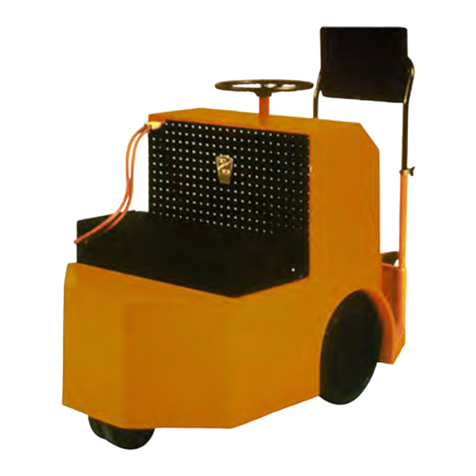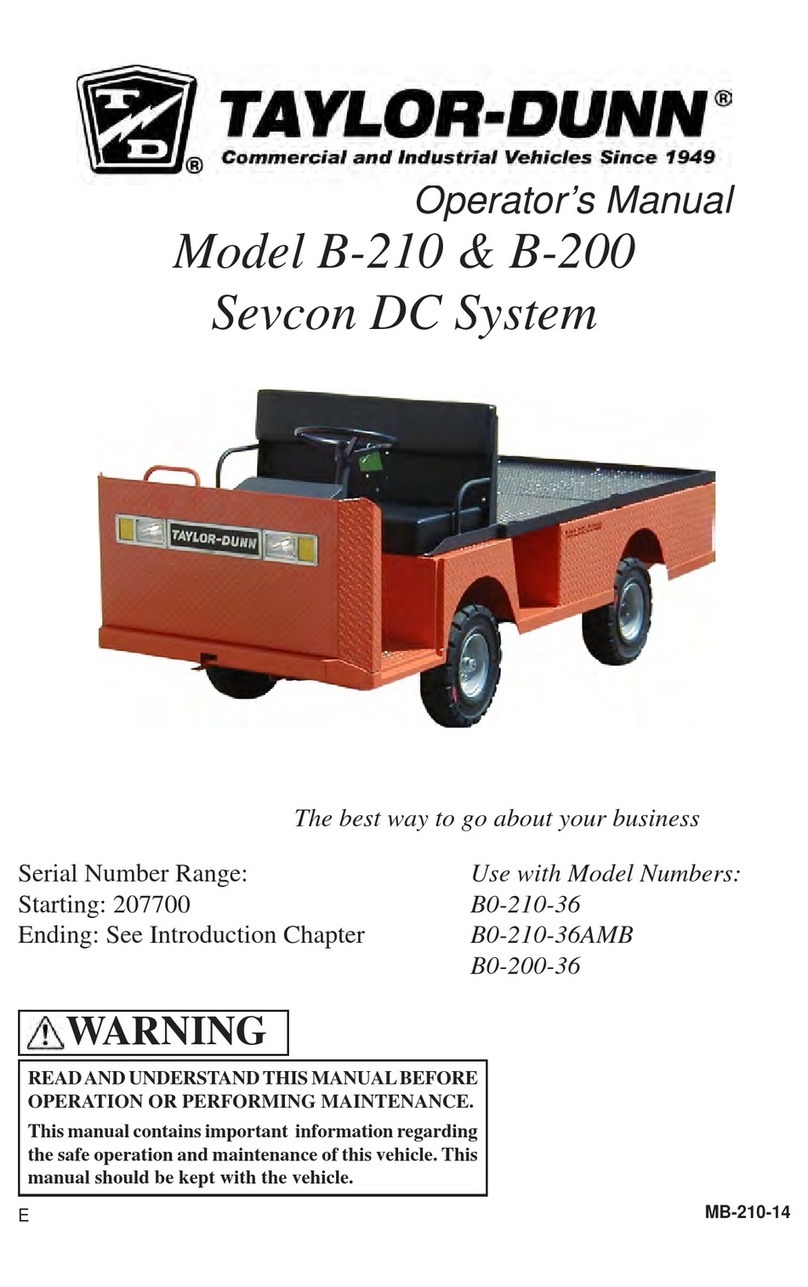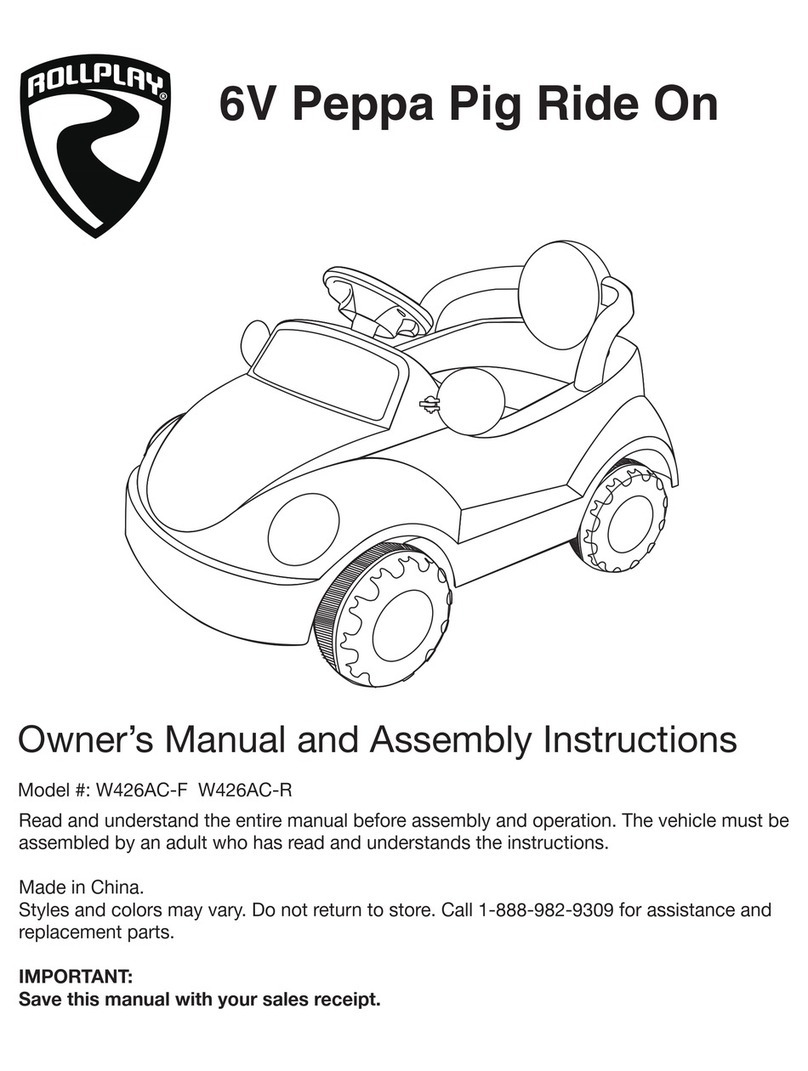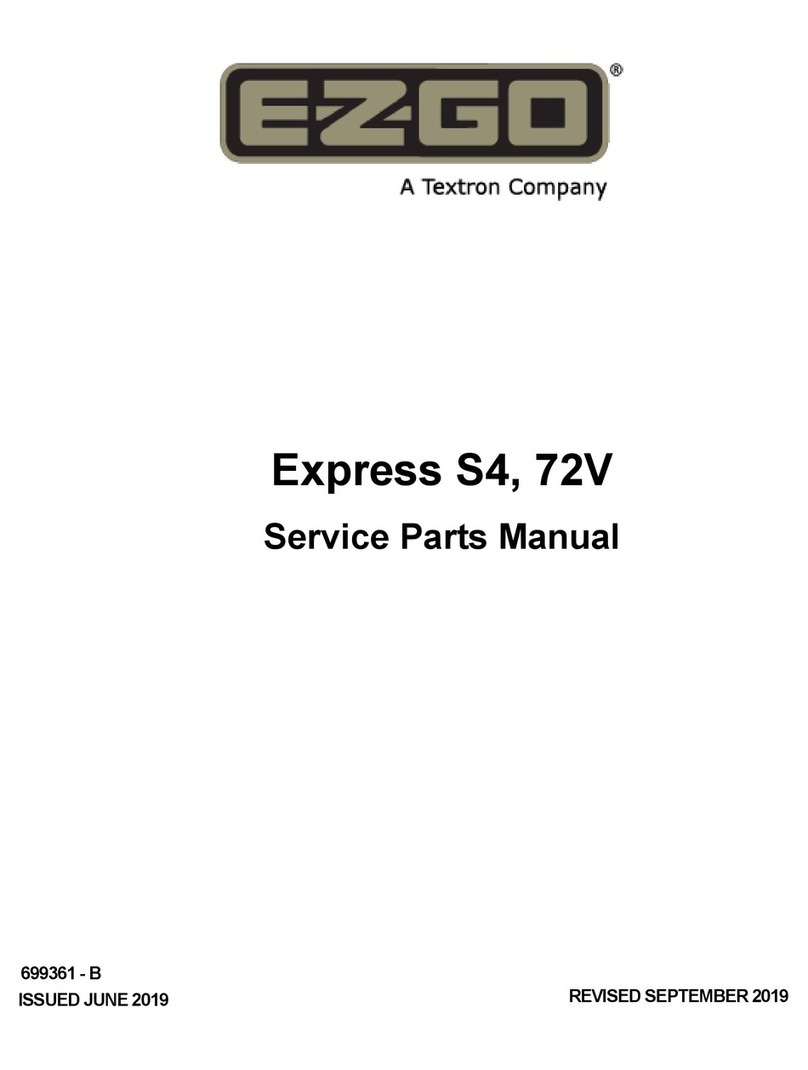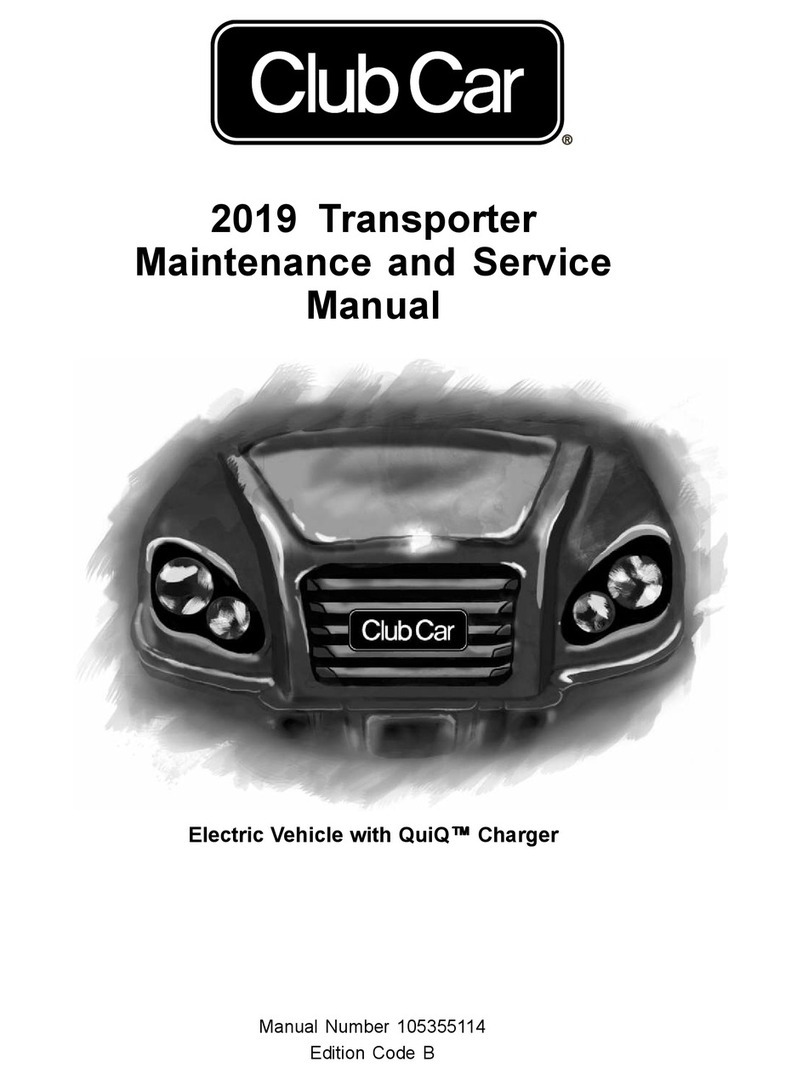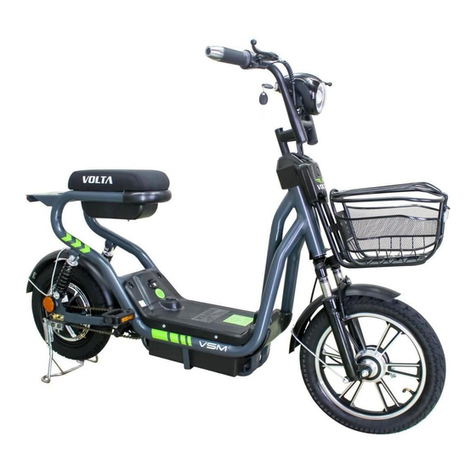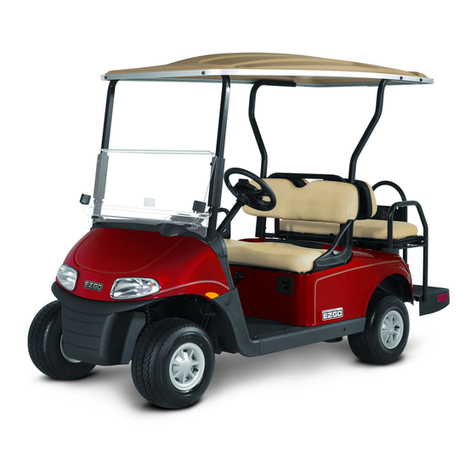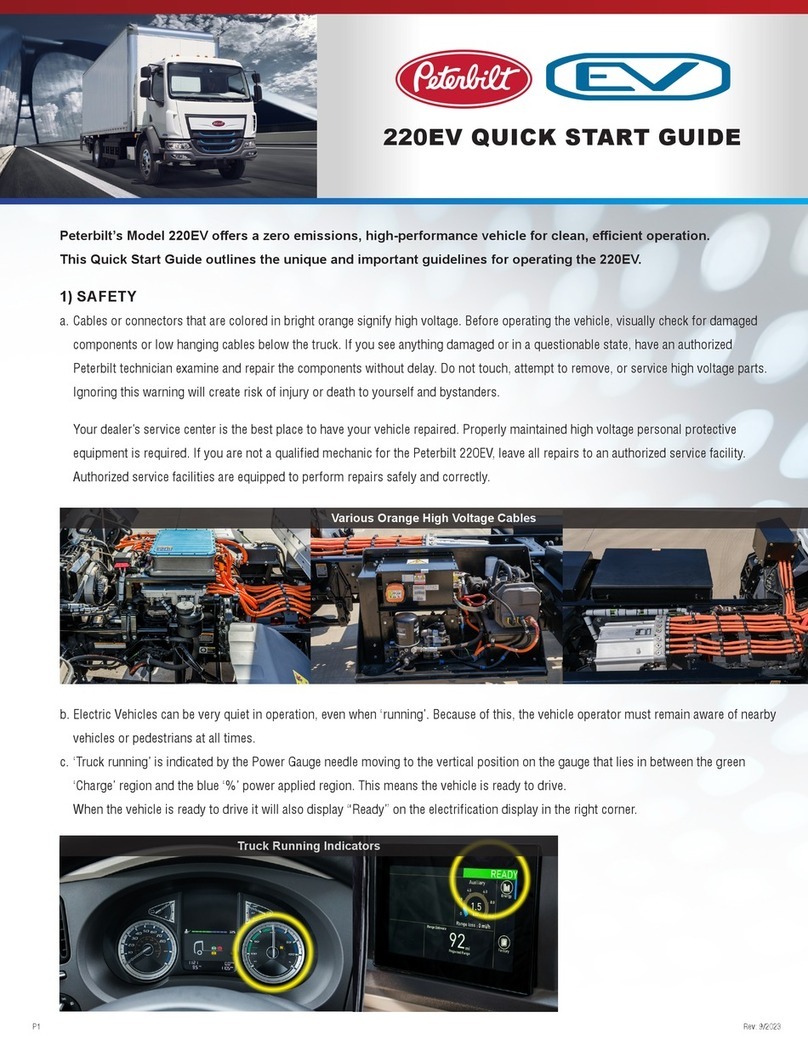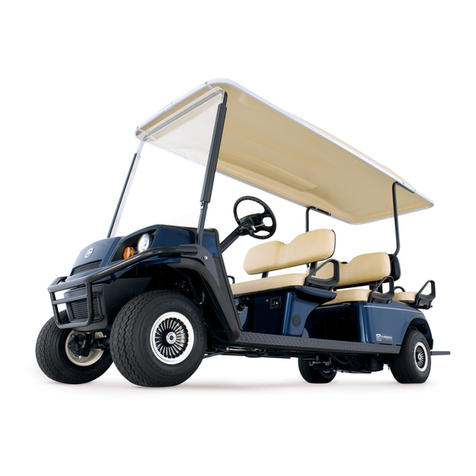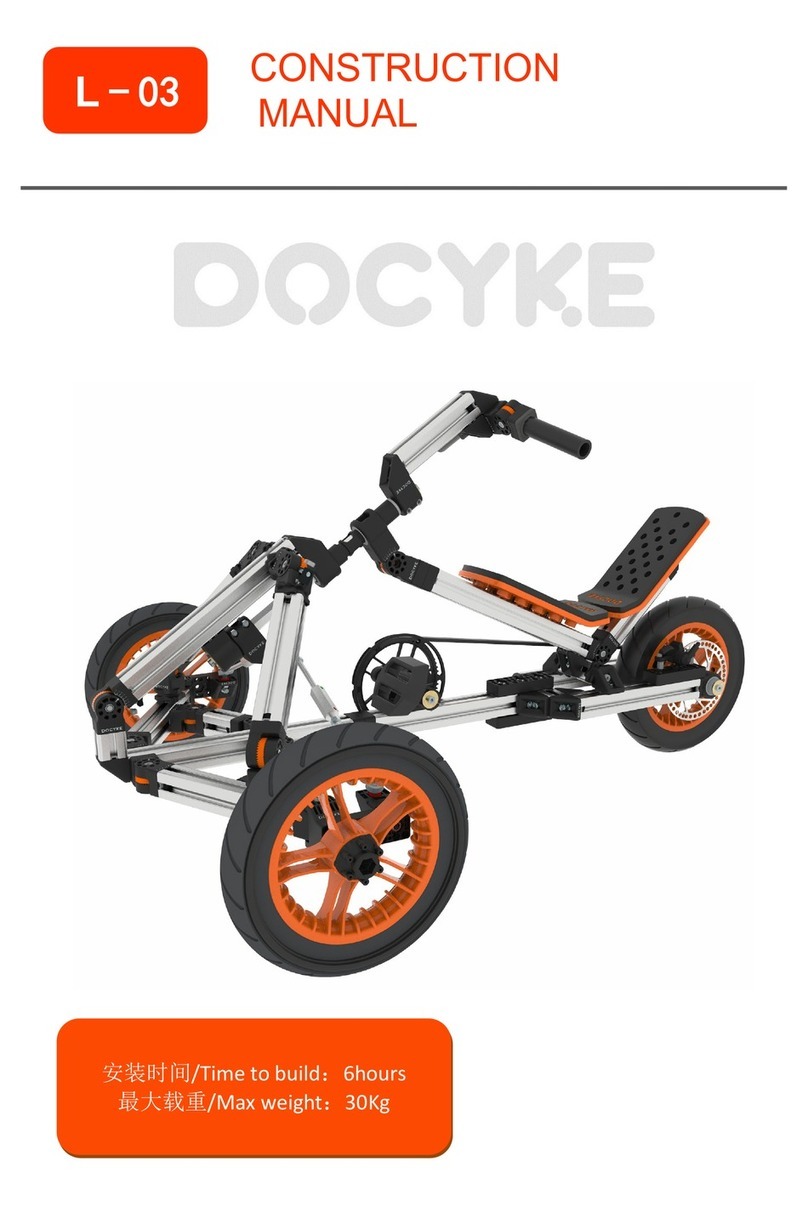
Page-10 MB-440-10
Bigfoot G-1500
RESPONSIBILITIES
Of the Owner...
The owner of this or any Taylor-Dunn vehicle is
responsible for the overall maintenance and repairs
of the vehicle, as well as the training of operators.
Theownerisalso responsible for operator trainingper
the following federal regulations:
• ANSI/ITSDF 56.8-2006 Personnel and Burden
Carriers: Part II, Paragraph 6.2a.
• ANSI/ITSDF 56.9 – 2007 Safety Standard for
Operator Controlled Industrial Tow Tractors: Part
II, paragraph 4.11.
• Code of Federal Regulations (CFR) Title 29,
Subtitle B, Chapter Xvii OSHA, Part 1910.178
Powered Industrial Trucks (2011): 1910.178,
Section (l).
Per OSHA Regulation, 29 CFR 1910.178 Powered
Industrial Truck Operator Training, the owner must
keepa record ofconducted training andmaintenance
performed on the vehicle.
Of the Service Personnel...
The service personnel are responsible for the service
and maintenance of the vehicle. At no time shall a
service person allow any untrained personnel to service
or repair this or any Taylor-Dunn®vehicle. For the
purposes of training, a qualied service person may
oversee the repairs or services being made to a vehicle
by an individual in training.At no time shall an untrained
individualbeallowedtoserviceorrepairavehiclewithout
supervision. This manual is not a training guide.
Personnel performing service and repair shall have
knowledge of:
• Basic standard automotive repair procedures
• Operation of internal combustion engines
• Basic DC electrical theory
• Use of digital and analog multi-meters
• Lead acid batteries
Personnel performing maintenance shall have basic
knowledge of standard automotive maintenance
procedures and lead acid batteries.
Of the Operator...
A vehicle shall not be operated until the operator has
successfully completed an operator training course
provided by the owner of the vehicle.
Theoperator is responsibleto be surethat the vehicle
is operated only on authorized roads, highways, and
installations.
The operator is responsible to confirm that all
passengers are properly seated and properly using
the available restraints.
The operator is responsible for the safe operation of
the vehicle, preoperational and operational checks
on the vehicle, and the reporting of any problems to
service and repair personnel.
Of the Passengers ...
Thepassengersareresponsibletoremainfullyseated,
keepingtheir hands, arms,and legs insidethevehicle
at all times. Each passenger shall be fully aware of
the vehicle’s operation.All forms of recklessness are
to be avoided.
To maintain peak performance, always use original
Taylor-Dunn replacement parts intended for use
on your vehicle. Taylor-Dunn components are
designed and tested for use on specic Taylor-Dunn
model vehicles. Only use the correct Taylor-Dunn
replacement components for your Taylor-Dunn
vehicle.
Do not modify your vehicle:
Modications to this vehicle may have an undesirable
affect on the operation of the vehicle, result in
additional frame stress, or stress other components
resulting in premature failure or an unsafe condition
and may lead to an accident resulting in serious injury
or death.
WARNING
The only personnel authorized to repair, modify, or
adjust any part of this or any Taylor-Dunn vehicle is
a factory authorized service technician. Repairs made
by unauthorized personnel may result in damage to
the vehicles systems which could lead to an unsafe
condition resulting in severe bodily injury and/or
property damage. Unauthorized repairs may also
void the vehicles warranty.
WARNING

